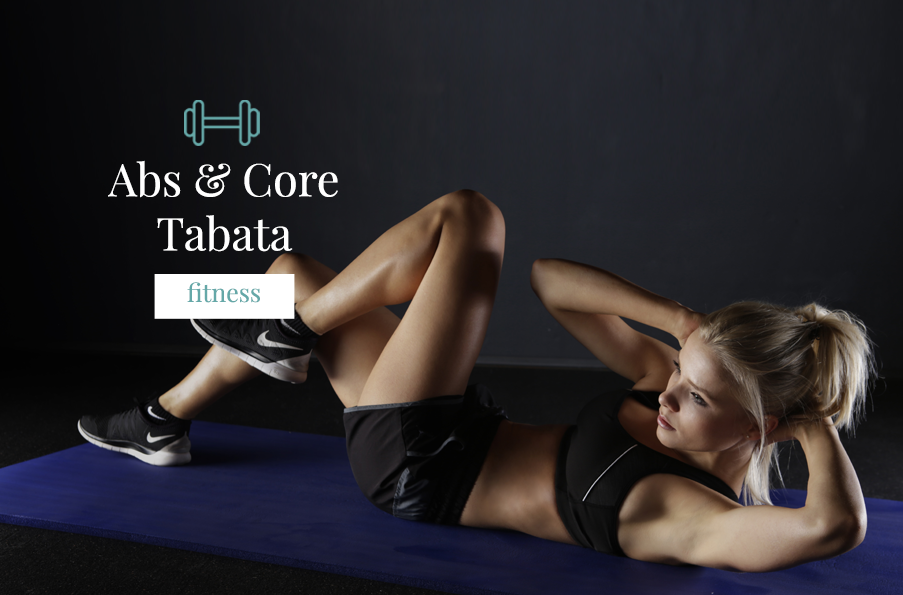High-Intensity interval workouts are all the rage right now. Personally, I love this because I’ve been a devout follower for years, spreading the word to anyone who would listen, even if they thought I was strange. Trust me, they thought I was strange.
The thing is, the type of workout I’m going to share with you today, Tabata, a short workout, isn’t new, it’s just become more popular as people continue to look for workouts that provide noticable fitness and weight-loss benefits in shorter intervals of time. Is it like Crossfit? Is it like circuit training? It is a bit of both. Tabata training is attractive because it saves a lot of time for people. It offers the maximum benefits with the least amount of time used to get those results.
The name Tabata comes from the man who invented it – Dr. Izumi Tabata, a Japanese physician and researcher. He conducted a study using an interval-based training model. His objective was to see if athletes would benefit from a 20/10 session repeated eight times. 20/10 means 20 seconds of all-out exercise followed by 10 seconds of rest. This adds up to four minutes total.
Intervals were originally designed for running. An example of Tabata training for runners is 20-second sprints and 10 seconds of rest. This will improve cardiovascular fitness. The Tabata protocol can be used for core strength as well as weight training.
Whatever exercise you use, Tabata training will raise your metabolism and heart rate immediately. Since you are performing these exercises at a very high intensity, your body will have to work much harder to keep it up. This will cause your heart to pump fast and your metabolism to jump, which you want if you are planning on losing fat. Your metabolism will stay at that high not only during the workout, but after the workout as well. This means that your body will be burning fat for hours after.
Many exercises and types of equipment can be incorporated into the Tabata protocol. You could use push ups, planks, squats, resistance bands, weights, or a bench. To start, use four exercises per Tabata. I’m going to be sharing more and more of these throughout the rest of the year and wanted to take this time to explain more in detail why these workouts are so effective.
Tabata Workout Example:
- Heels High
- Leg Raises
- Mountain Climber
- Russian Twists
- Dumbbell Hip Thrusts
How to do it: Do 20 seconds of Heels High, then rest 10 seconds. Do 20 seconds of Leg Raises then rest 10 seconds. 20 seconds of Mountain Climbers, and rest. 20 seconds of Russian Twists and rest. Do 20 seconds of Dumbbell Hip Thrusts, then rest 10 seconds. And then do that whole cycle again – eight more times.
This would bring you to a total of approximately 20 minutes. Once you get the hang of things, you could create two or three different Tabata routines with up to twelve different exercises and run through two different routines a session. With a five to eight minute warm up and cool down, you’ve got an effective workout. Those 20 second intervals may not seem very difficult but at your maximum capacity, those 20 seconds will seem like the longest 20 seconds of your life.
Warm up properly with dynamic exercises as opposed to static stretches. Be prepared to sweat! It’s effective, as Dr. Tabata’s study showed, and ultimately improves endurance. It teaches your body to tolerate lactic acid. When you train in a high-intensity zone, your threshold becomes higher. It also keeps your metabolism running on high gear.
One of the greatest benefits of anaerobic training is that your body keeps burning fat for 24 hours after your workout. So the amount of fat that can be burned using Tabata training is what draws many people to using it. As a weight loss tactic, Tabata is a great tool.
Cautions About Tabata Training:
- Tabata training is not for beginners. Tabata training is best for advanced exercisers who are comfortable with high-intensity exercise. The intensity accumulates, peaking near the end. It’s easy for the intensity to become too challenging if you’re not used to this type of training.
- If you go all out during the high intensity intervals, the 4-minute cycle will feel like the longest, most uncomfortable 4 minutes of your life. It may be too intense for some people.
- There is always a greater risk of injury when you’re doing high-impact, high-intensity exercise. Minimize that risk by ensuring you’re fit enough for this type of training. This would include working your way up to the intensity and duration. Also make sure you completely warm up before you start into your Tabata routine.
- Four minutes of the same exercise, even with rests in between, can get monotonous and quickly fatigue your muscles. This can cause your form (and motivation) to suffer if you aren’t mentally prepared! Make sure you keep the proper posture and technique to avoid injury.
Heels High:
- Lie on your back with your arms by your side and legs straight and slightly off the ground.
- Bring your knees toward your chest, and subsequently push your heels upward in a straight line.
- When pushing your heels upward, attempt to keep your legs straight and perpendicular to the ground.
- While maintaining control, lower your legs back to the starting position before beginning the next step.
Targets: Core, lower abdominal muscles
Leg Raises:
- Place your hands under your gluten with your palms facing down.
- Keep your legs as straight as possible.
- Slowly raise your legs perpendicular to the floor.
- Hold the contraction at the top for a second, then slowly lower your legs to the start position.
Note: Use a bench if you want a more challenging workout. Letting your legs hang off the edge will increase your range of motion.
Targets: Core, Interior Hip Flexors, Internal and External Oblique Muscles
Mountain Climber:
- Begin in a starting plank position your hands and feet.
- Keeping your arms straight, alternate bending your knees and bringing them forward as close to your hands as possible.
- Focus on maintaining a flat back throughout the movement.
Note: The above demo is tailored for beginners. To increase the intensity, pick up the speed and jump your feet forward as you alternate legs.
Targets: Core, Shoulders
Russian Twists:
- Begin by lying down on your back. with your knees bent and off the ground.
- Hold the weight with both hands at waist-level.
- Twist to transfer the weight to one side of the body, lowering yourself to just above the ground.
- Continue the twisting motion to each side for time.
Note: This can be done as a bodyweight exercise or with a kettlebell, dumbbell, medicine ball, or plate weight.
Targets: Obliques, Core
Dumbbell Hip Thrusts:
- Lie face up on the floor with knees bent, feet planted firmly on the floor with a set of dumbbells resting across your hips.
- Grab the dumbbells with a shoulder-width overhand grip and hold them securely in place. Brace core and press your heels into the floor, driving your hips upwards.
- Pause at the top, making sure to squeeze glutes. Repeat.
Note: As you advance, increase the weight in your dumbbells, using your hips to help thrust your legs upward.
Targets: Glutes, Core, Quads






